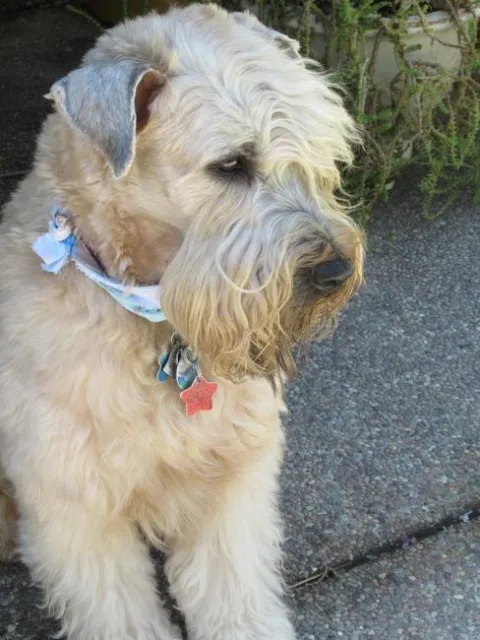Our wonderful Wheaten Terrier, Darby, gave me the idea for today's blog!

Let me explain. If you're a dog owner/walker, you'll understand that these little guys are the best seed collectors on the planet. Wherever they roam in the fall, seeds are sure to follow as they're lovingly gathered up by their coats and dispersed to a new and often willing growing area. Nature will out! So, that's how Darby, the great seed gatherer, gave me the idea to research and write about “How to Save Seeds”—‘tho probably not the kind that his beautiful soft coat favors!
I had heard about the wonderful Native American Sovereignty Alliance whose focus is to preserve the wide variety of plants traditionally grown by Indigenous communities across the county. Rowen White, the organization's director, suggests saving seeds “from the best-looking plants in your garden.” She maintains a collection of more than 500 varieties of vegetable, flower, and herb seed, including 30 types of beans! For home use, White suggests saving what she called a “functional workhorse collection” of five or six species. Her advice is to start with a few self-pollinating plant varieties like beans, peas, tomatoes, and lettuce. For beans and peas, let the pods stay on the vine until they are leathery and you can hear the seeds rattling inside. Once you've got that special little “percussion instrument sound”, pick them and let the beans dry indoors for a week or more.
Some crops have a hard time producing seeds when too few plants are grown. Others can reproduce with just a single plant. So, grow enough plants to get the seed crop you will need. In order to produce seeds that are true-to-type, a little garden “choreography is needed to prevent unwanted cross-pollination between different varieties of the same species. For some crops like lettuce and peas, all that's needed is a little extra space between varieties. For others, more advanced methods can be used such as larger isolation distances, pollination barriers, or hand pollination.
Know when your seeds are mature. For crops that produce wet fruits, the seeds are not always mature when the fruits are ready to eat. Eggplant, cucumber, and summer squash fruit are eaten when the fruits are immature and still edible—but before the seeds are actually mature. In order to save these seeds, you'll need to leave a few fruits to fully mature in the garden. Those “wet fruited crops” must be picked when their seeds are mature. Dry fruited crops like grains, lettuce, and beans are easier and can be removed from the plant once seeds are dry and hard.
For tomatoes, save only seeds from heirloom varieties and not hybrids. The hybrids' offspring won't taste the same as the parent plant and after all that work, you'll most likely be disappointed. Pick the tomatoes when they're ripe, scrape the seeds into a jar, add water and let them sit to ferment. The flesh and goo rise to the top and the seeds sink to the bottom—magic! After about a week, rinse the seeds and spread them out on a tea towel to dry. For lettuce, let a hearty-looking heard bolt into bloom. Once you see the flowers turn into white fluff, a bit like little dandelions, shake the stalks into a paper bag, and in go your lettuce seeds.
Storing seeds properly is just as important as collecting them. Use glass jars to protect them from insects and rodents. Label jars with the name, harvest date and place, and any other information you have about who and where the seeds came from. When kept in a cool, dark place, seeds can last many years. The rule of thumb is, the bigger the seed, the longer the life span will be. A bean can sprout after 20 years, or even more. The trick is to keep it in a freezer. On the other hand, onion and carrot seeds are notoriously short-lived.
As White says, “I love seeds, because I love stories”--and seeds can tell some intriguing stories. She has direct knowledge to back up that wonderful thought. As an undergraduate, over 20 years ago, she went back to the Mohawk community of Akwesasne, in upstate New York. There she collected seeds along with their stories from her elders! For White, saving seeds isn't just about stashing them in a vault for some distant future; it's about preserving the knowledge within the plant and seed. She has learned the importance of how to grow and keep seeds, and therefore the plants themselves, alive season after season. Ever mindful of the need for adaptation, White wisely reminds us, “If we want a resilient food supply in the face of climate change, we need seeds that are continuing to adapt” season after season and beyond into the future.

